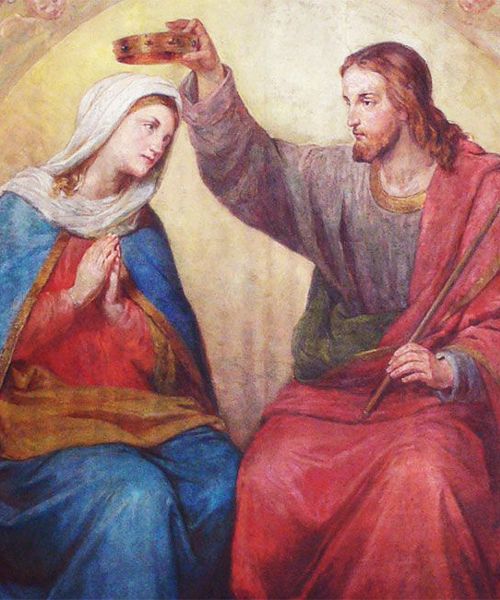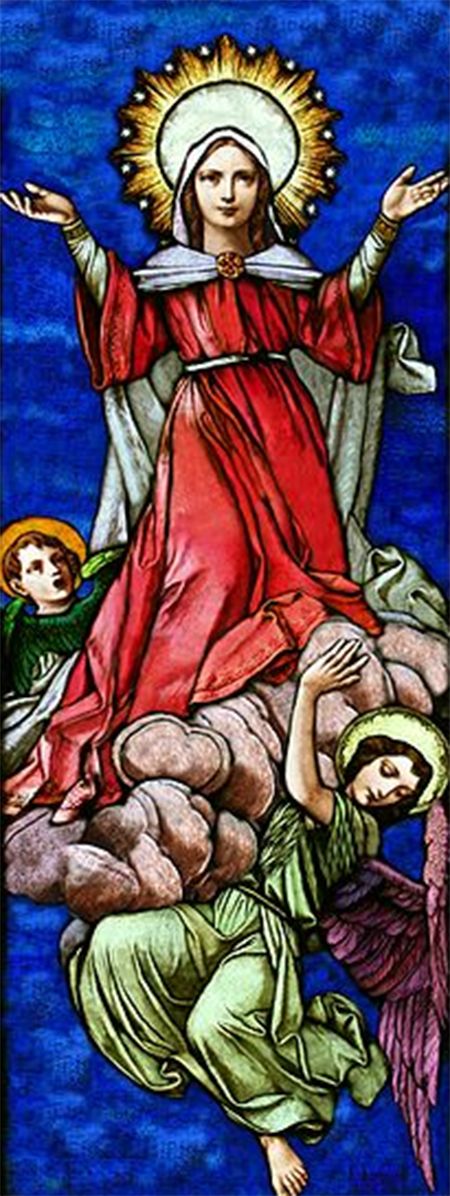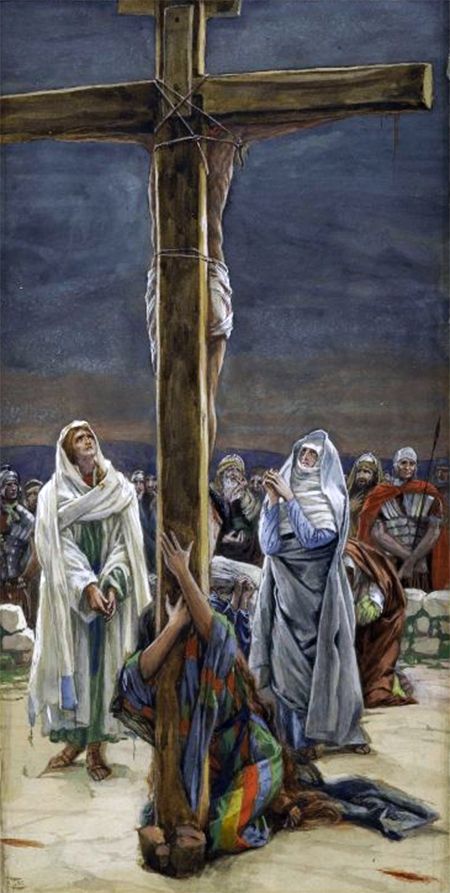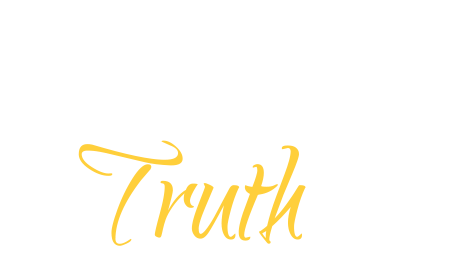
The Final Dogma
In their elevation of Mary over the past centuries, four teachings about her, called the 'four dogmas,' have arisen: her perpetual virginity, her role as the 'Mother of God,' the Immaculate Conception, and her Assumption to heaven without seeing corruption at death.
Besides these four dogmas, there are other teachings held by the church, and one of these—that Mary is a co-mediator with Christ—is now being considered by church leaders as becoming dogma (the highest level of teaching and considered infallible). Do we find support for this dogma in the Scriptures? What are the ramifications of this doctrine on the life of a believer?
First, let's review the four dogmas of Mariology before delving into the final dogma.
Mother of God
The first Marian doctrine formally defined by the Catholic Church is Mary's mothership of God. It was affirmed by the Third Ecumenical Council held at Ephesus in 431, and later the Council of Chalcedon in 451. When a heretic named Nestorius taught that only the human part of Jesus was born of Mary, not the divine-human part of Christ, the council sought to establish that Jesus was both God and man. The focus was not to teach that Mary was the mother of the divinity of Jesus.
The declaration made at Chalcedon stated of Christ, 'Born of the Virgin Mary, the Mother of God, according to his Manhood' (Confession of Chalcedon). Most Roman Catholic scholars recognize that Mary was not the Mother of God in the strictest sense of the word. In a pamphlet published by the Knights of Columbus, we see this point: 'It should be evident that Mary's motherhood did not by any stretch of the imagination, have anything to do with the production of God. The very idea is inherently absurd. The utter independence of the Supreme Being rules out any production as far as he is concerned' (The Mother of Jesus, p. 9).
Though the Catholic Church does not teach that Mary was the Mother of the divine Jesus, what theologians teach does not always match what members believe. Many Catholics believe Mary was the Mother of God in the strictest sense, though that term is never found in the Bible. The Scriptures speak of Mary as the mother of Jesus.
From the standpoint of the Bible, we can agree that Mary was the mother of the divine-human child that she brought into the world. But we cannot agree that Mary was somehow the Mother of God and a creator of divinity for through Christ 'all things were created … and He is before all things, and in Him all things consist' (Colossians 1:16, 17).
Perpetual Virginity of Mary
The second dogma of Mariology is the Perpetual Virginity of Mary. In part, this teaching states that Mary was a virgin when Jesus was conceived in her womb, she was a virgin after Christ was born, and she remained a virgin for the rest of her life. Though she was married to Joseph, she supposedly never had intimate relations with him.
From the time of St. Augustine, sexual relations have been generally regarded in a negative light in the church. In fact, Augustine taught that Original Sin was sexual sin. Intimacy was seen as primarily existing for the purpose of procreation, which is why contraceptives are forbidden in the church, even within marriage. Contraceptives remove the issue of procreation and allow sex for pleasure.
The idea of celibacy in the priesthood springs from the notion that sexual relations are somehow defiling. It was concluded that Mary, who gave birth to Jesus, could not be defiled and therefore did not have relations with Joseph. The Council of Trent, held between 154 and 1563, stated, 'If anyone should say that the married state is better than celibacy, let him be cursed.'
One Catholic scholar explained, 'The womb that bore the God incarnate was appropriately reserved for him alone, and not to be used to bear any other creature. Jesus chose to ride on a colt that no one had ever ridden. He was laid in a tomb that no one had ever been laid in. Likewise, he chose the womb of a virgin who had never known a man and would bear no child but himself' (Mary and the Bible: Questions and Answers, p. 26).
It's true that the womb of Mary had not held a child before the birth of Jesus, but it cannot be proved from Scripture that she did not have children after the birth of Christ.
The Immaculate Conception of Mary
The third dogma of Mariology is called the Immaculate Conception. This teaching, proclaimed by Piux IX in 1854 in his encyclical Ineffabilis Deus, states that Mary did not suffer the result of Adam's sin—i.e., Mary had the nature of Adam before the fall.
The encyclical states, 'We declare, pronounce, and define that the doctrine which holds that the most Blessed Virgin Mary, in the first instance of her conception, by a singular grace and privilege granted by Almighty God, in view of the merits of Jesus Christ, the Savior of the human race, was preserved free from all stain of original sin, is a doctrine revealed by God and therefore to be believed firmly and constantly by all the faithful' (http://www.papalencyclicals.net/pius09/p9ineff.htm).
There is no consistent tradition in the early church on this teaching. Augustine, Ambrose, Chrysostom, Eusebius, Anselm, Cardinal Tahitian, Saint Antoninus, St. Thomas Aquinas, Pope Gregory the Great, Pope Innocent the third, and many other Fathers, doctors, saints and popes of the Roman Church clearly deny that Mary was conceived without Original Sin. Many also did not hold to the belief that Mary never committed a sin in her life.
The Bible teaches that Christ was born 'that holy thing' (Luke 1:35 KJV) and that Jesus 'was in all points tempted as we are, yet without sin' (Hebrews 4:15). But the Scriptures are silent about Mary's nature, and says nothing about her being immaculate (without sin). The Word of God plainly states, 'All have sinned and fall short of the glory of God' (Romans 3:23). What the Bible says about Jesus, the Roman Catholic Church attributes to Mary without any biblical justification.
The Assumption of Mary

The fourth dogma of Mariology is called the Assumption of Mary and is based on the idea that she was taken to heaven without her body seeing corruption. This dogma was proclaimed in 1950 by Pope Pius XII and states in part: 'By the authority of our Lord Jesus Christ, of the Blessed Apostles Peter and Paul, and by our own authority, we pronounce, declare, and define it to be a divinely revealed dogma: that the Immaculate Mother of God, the ever Virgin Mary, having completed the course of her earthly life, was assumed body and soul into heavenly glory' (Apostolic Constitution of Pope Pius XII, Munificentissimus Deus, Defining the Dogma of the Assumption, November 1, 1950; http://w2.vatican.va/content/pius-xii/en/apost_constitutions/documents/hf_p-xii_apc_19501101_munificentissimus-deus.html).
In the book The Glories of Mary, St. Alphonsus De Liguori describes all sorts of interesting events leading up to Mary's death and her supposed resurrection to heaven. None of what he shares can be found in the Bible; rather, it is all based on oral tradition and apocryphal works.
He states that after Christ's ascension, Mary remained on earth to assist the apostles, solve their doubts, comfort them in their trials, and encourage them. She supposedly missed Jesus so much that she visited different holy sites in Palestine to find consolation.
A few days before she died, so goes the story, the archangel Gabriel visited her and said, 'Come, then, to take possession of thy kingdom, for I and all its holy inhabitants await and desire thee.' Then all the disciples were miraculously gathered at her bedside (even those that had already died), to hear her explain that she was going to paradise.
The disciples supposedly complained, 'We have already lost on earth Jesus our Master and Father who has ascended into heaven. Until now we have found consolation in thee. Now, how canst thou also leave us orphans?' The words sound like Jesus' own words to His disciples when He said, 'I will pray the Father, and He will give you another Helper, that He may abide with you forever—the Spirit of truth, whom the world cannot receive, because it neither sees Him nor knows Him; but you know Him, for He dwells with you and will be in you. I will not leave you orphans; I will come to you' (John 14:16–18).
The rest of the story about Mary reads like a fairytale. She told Peter he would be head of the church; Jesus came to her and gave her a last communion; angels then bore her to heaven where the same glorious welcome given to Jesus was given to her. Liguori then says that the Father crowned her with power, the Son crowned her with wisdom, and the Spirit crowned her with love. Then she was given a throne next to Jesus and declared a sovereign of heaven and earth with the command that all angels and creatures must acknowledge her as their queen and serve and obey her.
Pope Gelasius I, from the fifth century, condemned this teaching, but Pius XII, in the twentieth century, stated that Gelasius was wrong. When Karl Keating, a Roman Catholic theologian, defended the Assumption of Mary, he stated, 'Still, fundamentalists ask, where is the proof from Scripture? Strictly there is none. It was the Catholic church that was commissioned by Christ to teach all nations and to teach them infallibly. The mere fact that the church teaches the doctrine of the assumption as something definitely true, is a guarantee that it is true.'
This is the circular reasoning, combined with tradition, that is used to establish the dogma of the Assumption of Mary. You can find no Bible support for this teaching.
The Final Dogma
There is discussion within the Roman Catholic Church to proclaim a new dogma on Mary, which presents her as 'Co-Redemptrix' with Jesus, Advocate with the Father, and Mediatrix of all graces between the Father and the human race.
In The Glories of Mary, St. Alphonsus De Liguori explains how Mary is Co-Redemptrix with Jesus. He writes that when Mary and Joseph took Jesus to the temple to dedicate him, that Mary 'fully understood from the prophets that he was to be betrayed by one of his disciples.' The Bible provides no indication that this is true. Liguori also states that Mary knew the disciples would forsake Jesus, that He would be treated with contempt, that His flesh would be torn and mangled by scourges, and that her Son would be pierced with nails.
Knowing all of this would happen, Mary supposedly pronounced the sentence that Jesus should die an ignominious and painful death, saying, 'Eternal Father, since thy will is that it should be so, not my will, but thine be done. I unite my will to thy most holy will, and I sacrifice this my Son to thee.'
Liguori also states, quoting Andrew of Crete, 'The wills of Christ and of Mary were then united, so that both offered the same holocaust [sacrifice]. Their hearts were united, they offered the same sacrifice. She, therefore, producing with him the one effect, the salvation of the world.' In other words, they both became saviors of the world because their wills were merged, and they offered the one sacrifice.
He continues, 'At the death of Jesus, Mary united her will to that of her Son, so much so, that both offered one and the same sacrifice. Therefore, the Holy Albert says that both the Son and the Mother effected human redemption and obtained salvation for men. Jesus, by satisfying for our sins, Mary, by obtaining the application of this satisfaction to us.'
He continues, 'Hence Denis the Carthusian, also asserts that the divine Mother can be called the Savior of the world. Since by the pain that she endured, in commiserating her Son willing to sacrifice by her to divine justice, she merited that through her prayers the merits of the passion of the Redeemer should be communicated to men.'
And so, it is reasoned, that while Jesus offered the sacrifice, Mary distributes the benefits of the sacrifice because her will was merged with that of Christ's will.
Pope John Paul II, a strong supporter of Mariology, spoke six times in his writings about Mary as Co-Redemptrix, more times than any other pope. Quoting Philippians 2:5–8, he said, 'Mary shares through faith in the shocking mystery of this self-emptying. This is perhaps the deepest cyanosis [emptying] of faith in human history. Through faith, the Mother shares in the death of her Son in his redeeming death' ( Encyclical, Redemptoris Mater, March 25, 1987. AAS 79. 382. 83. Vatican Press Translation).
In another statement, he said, 'In this way Mary's motherhood continues unceasingly in the Church as the mediation which intercedes. The Church expresses her faith in this truth by invoking Mary under the titles of Advocate, Auxiliatrix [helper], Adjutrix and Mediatrix' (Encyclical Letter of John Paul II on the Blessed Virgin Mary in the Life of the Pilgrim Church promulgated on 25 March 1987).
In an address given in Nagasaki, Japan, John Paul II said, 'There is no better way to approach her Son than through her.' In a speech given in Argentina, he explains, 'In the evangelizing history of the Church the Virgin Mary has occupied and continues to occupy a singularly unique place. It has rightly been said, 'to Christ through Mary.''
The subject of this final dogma is still being promoted far and wide within the Roman Catholic Church. There are millions of Catholics among the clergy and the laity who are pushing for the pope to proclaim a fifth dogma that would proclaim Mary as Co-Redemptrix, Advocate, and Mediatrix of all graces.
Pope Paul VI stated in his Dogmatic Constitution of the Church, Lumen Gentium, 'Taken up to heaven she did not lay aside this salvific duty, but by her constant intercession continued to bring us the gifts of eternal salvation. By her maternal charity, she cares for the brethren of her Son, who still journey on earth surrounded by dangers and cultics, until they are led into the happiness of their true home. Therefore the Blessed Virgin is invoked by the Church under the titles of Advocate, Auxiliatrix, Adjutrix, and Mediatrix' (http://www.vatican.va/archive/hist_councils/ii_vatican_council/documents/vat-ii_const_19641121_lumen-gentium_en.html).
Co-Redeemer in Film

The best contemporary description of the final dogma can be seen in Mel Gibson's movie The Passion of the Christ. It's the story of Jesus presented through the eyes of Mary. In the movie, she is presented as a partner in the sufferings of Christ. When He is flogged by Roman soldiers, Mary wipes up the blood. When he falls under the cross on the Via Dolorosa, Mary encourages Him. When He dies on the cross, Mary helps take His body down and holds Him in her arms.
Mary participates in the sufferings and in the redemption of Jesus. She is not actually sacrificed, but offers her Son in sacrifice. Therefore, it is said, she can intercede with her Son because she went through the experience of Calvary with Him.
Summary
Do the Scriptures support the idea that Mary is Co-Redemptrix, the Advocate for the people of God, and the Mediatrix of all graces? The Bible never says that Mary was full of grace, but it does proclaim that Jesus is full of grace (John 1:14), is our one Advocate (1 John 2:1), and alone mediates all graces from heaven to earth (1 Timothy 2:5).
The apostle Paul describes Christ's role as Advocate when he wrote: 'Who is he who condemns? It is Christ who died, and furthermore is also risen, who is even at the right hand of God, who also makes intercession for us' (Romans 8:34).
Hebrews is clear on this point as well: 'Therefore He is also able to save to the uttermost those who come to God through Him, since He always lives to make intercession for them. For such a High Priest was fitting for us, who is holy, harmless, undefiled, separate from sinners, and has become higher than the heavens' (Hebrews 7:25, 26).
The theologian James R. White appropriately states, 'Quite simply, Rome has attempted to create a mirror image of God incarnate Jesus Christ. Oh, yes. It's an image that is supposed to be on a smaller scale, but it is as close to an exact replica as can be made.'
The final dogma creates Mary in the image of Jesus and has believers render homage to her instead of Christ. It is a temptation for those who do not know the Scriptures, especially, as we will see in the next article, when Mary seems to be 'appearing' all over the world.
*This series of articles is based on messages by Pastor Stephen Bohr.
To find additional information on his ministry, please visit www.secretsunsealed.org. To purchase his full series on Mary, please click here.
